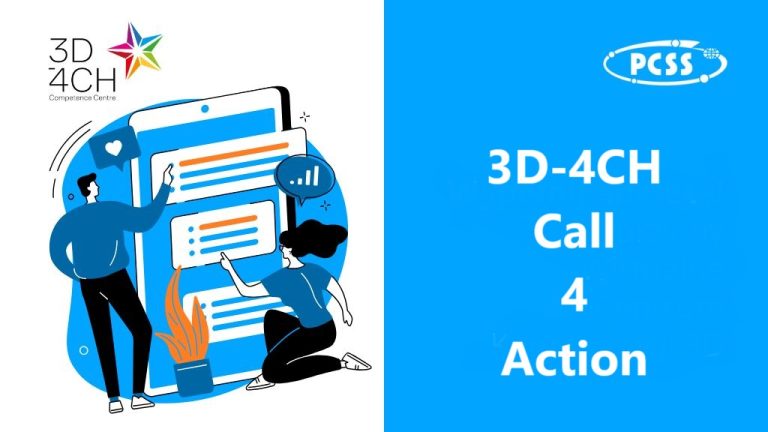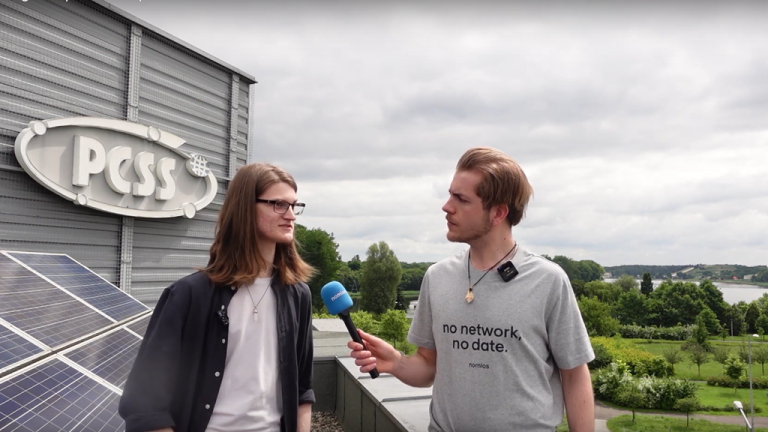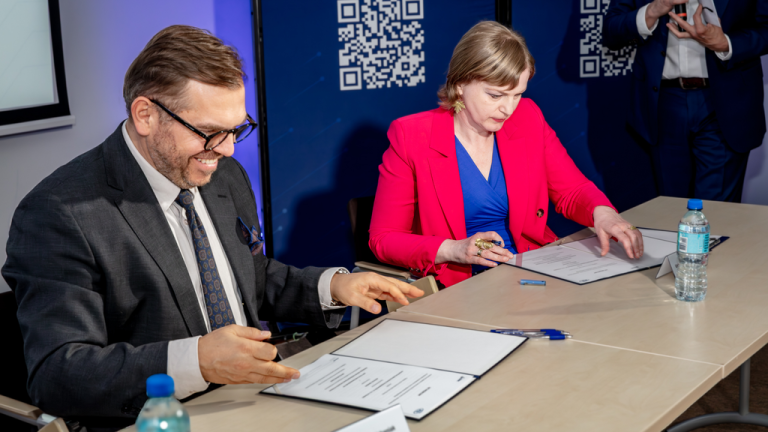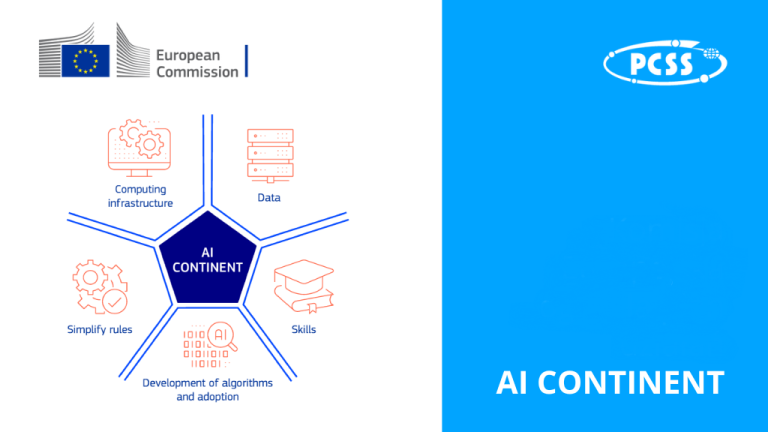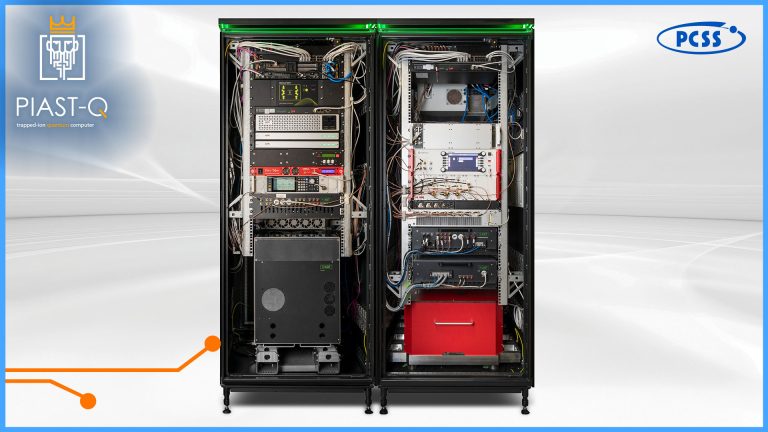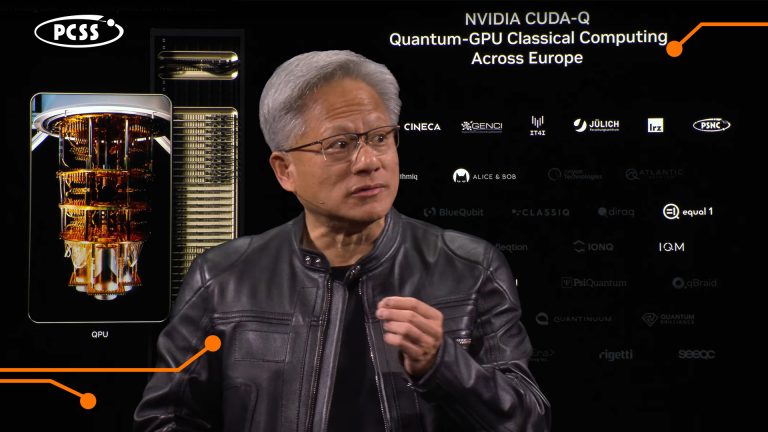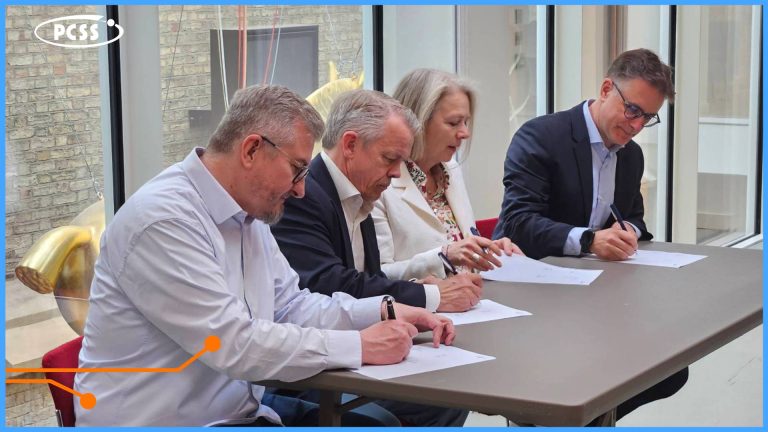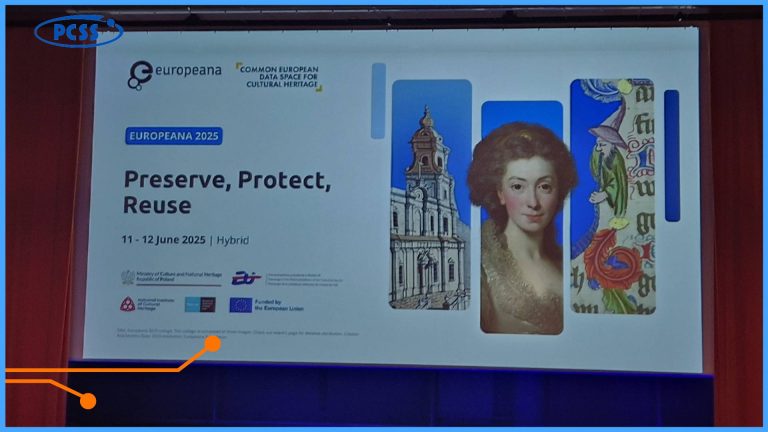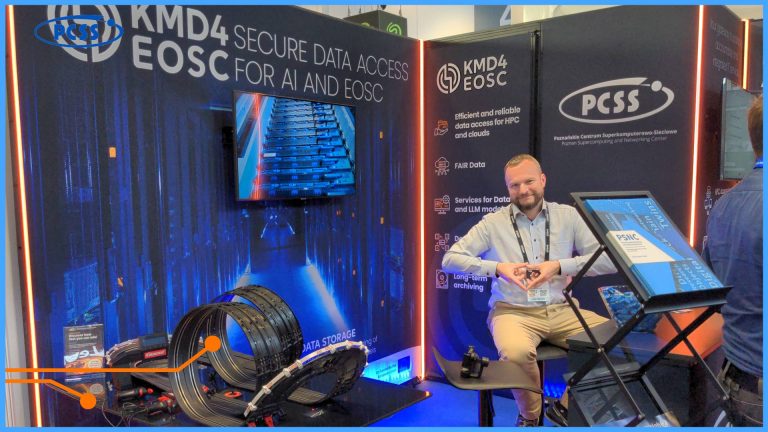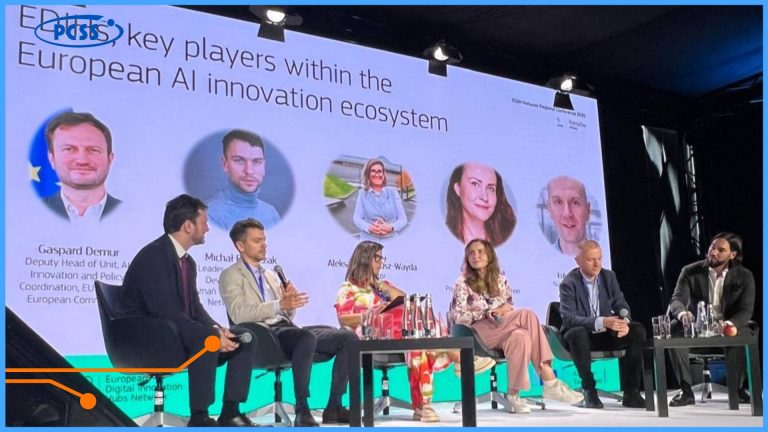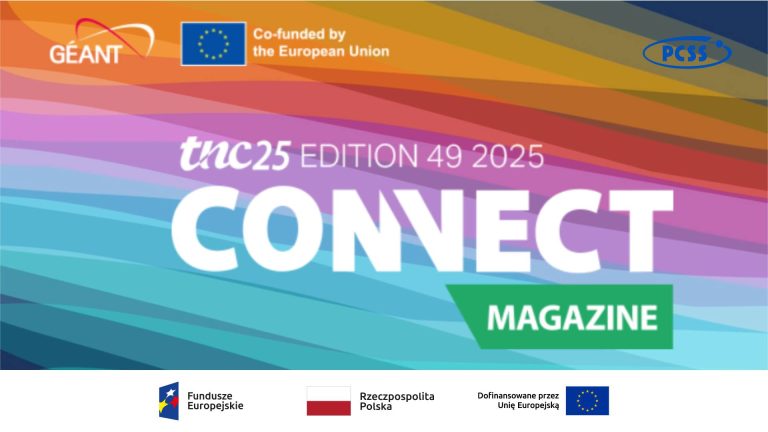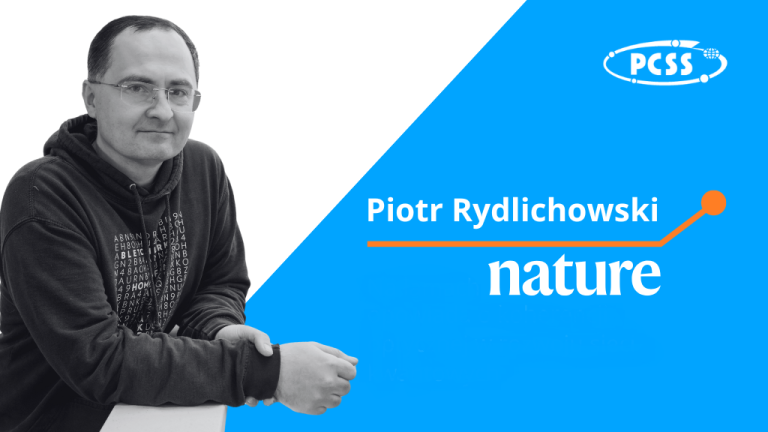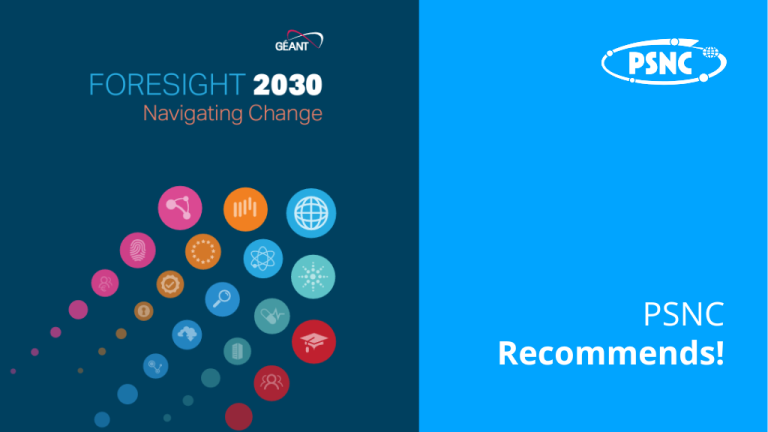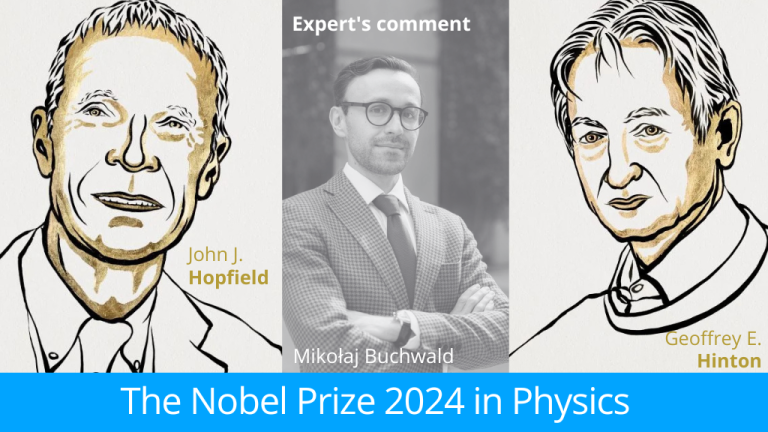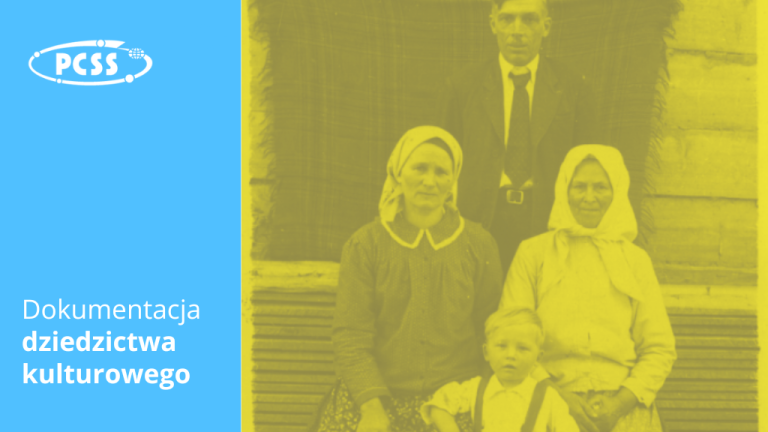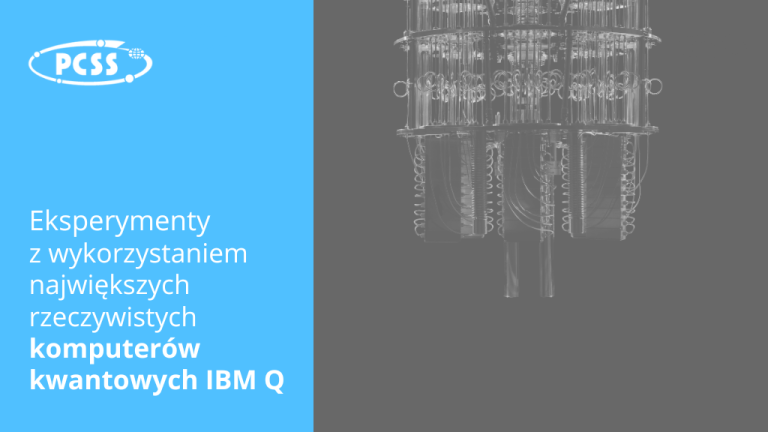“The system of mobile quantum sensors with optical clocks integrated into telecommunication networks (Q-ChronoS)” is a project related to the development of systems of two mobile quantum sensors based on optical atomic clocks and an infrastructure for optical frequency transfer, which will enable their use in various locations in Poland. The project is aimed at a wide range of recipients focused around quantum technologies, geodetics, metrology, physics, radiostrontium and communication.
The Q-ChronoS consortium consists of four institutions: PSNC (the leader), CBK PAS in Borówiec, Nicolaus Copernicus University in Toruń and AGH University in Kraków.
The project project is coordinated by:
dr Jerzy Nawrocki from the Astrogeodynamic Observatory in Borowiec (CBK PAS),
dr hab. inż. Przemysław Krehlik from the AGH University in Kraków,
dr hab. Michał Zawada from the Nicolaus Copernicus University in Toruń,
Wojbor Bogacki – who is the manager of Q-ChronoS – from the Poznań Supercomputing and Networking Center,
dr Krzysztof Turza also from PSNC.
The planned infrastructure includes free-space links and utilizes Dense Wavelength Division Multiplex technology. The potential of mobile quantum sensors will provide benefits for resilient time infrastructure, future network synchronization, precise positioning and next-generation navigation, as well as applications such as underground exploration, monitoring and relativistic geodetics.
The infrastructure created within the Q-ChronoS project will enable the research and development works in areas such as: relativistic geodetics, research on changes in gravitational potential, detection of seismic movements, direct oceanographic measurement of sea level and ocean dynamics, radioastronomical research, standardization and metrology of time; as well as fundamental research such as verification of the invariance of physical constants, couplings to fields of the Standard Model of ultralight scalar dark matter fields, dark energy models, general scalar field with hidden sectors, Kaluza-Klein new physics theory, dilaton or soliton models, verification of Lorentz invariance, and as tests of quantum gravity, special relativity, detection of gravitational waves, and searches for cosmological topological defects.
The total cost of this project (FENG.02.04-IP.04-0024/24) is 108 349 798,29 PLN, including 79 002 564,01 PLN from the European Funds.
Poland Announces Its Participation in the EU’s AI Gigafactories Program
2025-06-12
The Polish Ministry of Digital Affairs has announced that Poland is finalizing discussions with European Union partners regarding its participation in the EU's AI Gigafactory building program. Following the conclusion of public consultations, a formal application is expected to be submitted to EU structures before 20 June 2025.
One Logo, One Name – Even More Possibilities
2025-06-02
We are pleased to announce that official name of our Center has just been unified. Henceforth, the one name that represents us globally is PCSS.
Introduction to Knowledge Graphs – The Very First GRAPHIA Webinar
2025-05-20
We are pleased to invite you to the first GRAPHIA webinar, which is going to take place on 13 June 2025 at 11:00 CEST. The online session’s title is “Introduction to Knowledge Graphs” and it will be hosted by Julien Homo.
LUMEN Is Waiting for You Online!
2025-05-20
The LUMEN (Linked User-Driven Multidisciplinary Exploration Network) project was born of cross-domain collaboration among: mathematics, social sciences and humanities (SSH), earth system and molecular dynamics. As one of the project’s partners, PSNC is proud to present LUMEN’s official website, which has recently made its online debut!
Support Cultural Heritage – Take Part in a Short 3D-4CH Survey 🙂
2025-04-30
3D-4CH is a European project the goal of which is to revolutionize the way cultural heritage is protected, digitized, and made accessible through the use of advanced 3D technologies, artificial intelligence, and extended reality. Now you can also contribute to saving the precious cultural heritage for the next generations. Just take a short survey aimed at individuals, companies, and institutions that conduct courses or workshops related to the digitization of cultural heritage. The deadline for completing this survey is 21 May 2025.
PSNC is a part of Nomios and Nokia’s Connecting Europe Tour
2025-04-24
"The Connecting Europe Tour" is a video-blog project presented by Nomios and Nokia. Nat and Fraser, two young and witty entrepreneurs are on an exciting journey across Europe to dive into the world of cutting-edge technology and innovation. Throughout the mini series the guys visit: London, Cambridge, Paris, Brussels, Amsterdam, Geneva, Berlin and Poznań – where they explore the backbone of European research and education, the GÉANT network.
PSNC Supports Cybersecurity in Business
2025-04-18
The Poznań Supercomputing and Networking Center (PCSS) and Wielkopolska Agency for Enterprise Development (WARP) signed a letter of intent regarding cooperation in the area of cybersecurity. In its initial phase, the cooperation will feature the dissemination and promotion of information about cybersecurity and the security of ICT systems among entrepreneurs in Wielkopolska (Greater Poland) Voivodeship.
AI Factories: European Commission Announces the AI Continent Action Plan
2025-04-16
The European Commission sets course for Europe’s AI leadership with an ambitious AI Continent Action Plan. Becoming a global leader in artificial intelligence is the objective of the AI Continent Action Plan, which has been launched today.
The Launch of the First Polish AI Factory – PIAST-AI
2025-06-23
Today at PCSS a significant step towards making Europe a leader in AI technology has been taken. The PIAST-AI Factory at the Poznań Center was selected by the European Commission to participate in the "AI Factories" program. This makes the Capital of Wielkopolska region a crucial driving force in the development of fields such as: IT, cybersecurity, space technologies, robotics, and sustainable development.
Inauguration of PIAST-Q – A Leap for European Quantum Computing
2025-06-23
Today, under the Polish Presidency of the Council of the European Union, EuroHPC JU inaugurated PIAST-Q in Poznań (Poland). This first inauguration of a EuroHPC quantum computer marks a milestone in building a European quantum computing infrastructure. This is also the first EuroHPC infrastructure located in Poland.
PCSS Quantum Technologies at NVIDIA GTC in Paris
2025-06-17
At the NVIDIA GTC AI conference for developers in Paris (10-12 June 2025), the PCSS’ name appeared among the leading European institutions in the realm of quantum computing during the speech of the NVIDIA co-founder and CEO, Jensen Huang.
See you in Helsinki!
2025-06-13
It’s official – next year’s TNC is going to take place in Helsinki (Finland), and the host of the conference will be a Finnish educational network CSC Tieteen tietotekniikan keskus.
Preserving, Protecting and Reusing Cultural Heritage at Europeana 2025
2025-06-12
On 11 and 12 June 2025, the POLIN Museum of the History of Polish Jews in Warsaw is hosting the annual EUROPEANA conference, dedicated to European cultural heritage. The event is organized by the Europeana Foundation in collaboration with the Ministry of Culture and National Heritage, the National Institute of Cultural Heritage, and the conference host – the POLIN Museum. This year's edition is a part of Poland's Presidency of the Council of the EU. PCSS is represented at this event by Aleksandra Nowak (Head of the Digital Libraries and Knowledge Platforms Department) and Paweł Marciniak (Digital Libraries and Knowledge Platforms Department).
PCSS Presents the agrifoodTEF Project at the SCAR/BIOEAST Conference
2025-06-12
On 11 and 12 June 2025, the Polish Ministry of Agriculture and Rural Development organized the SCAR/BIOEAST conference, focused on research and innovation in the agricultural sector. PCSS was one of the participants in this event, as a partner in the agrifoodTEF project – which supports modern and innovative solutions for agriculture.
PCSS at ISC 2025
2025-06-11
On 10 June 2025, the 40th annual International Supercomputing Conference kicked off in Hamburg. For PCSS the first day of this year's ISC was a truly unforgettable experience! Our booth number E20, which is dedicated to the KMD4EOSC project and state-of-the-art data processing plus storage services, brought the passion for technology straight to the racetrack – resulting in fun galore for both our guests and ourselves!
PCSS at EDIH Network Regional Conference
2025-06-08
On 5 i 6 June 2025, the EDIH Network Regional Conference – one of the flagship events of the Polish Presidency of the EU Council – took place in Rzeszów. This regional meeting, organized within the network of European Digital Innovation Hubs (EDIH), aimed to strengthen cooperation among EDIH network members from across Europe through knowledge exchange, sharing best practices, and joint actions. PCSS was represented at the conference by Michał Błaszczak, Head of the Internet of Things Technology Department.
About PSNC in GÉANT CONNECT
2025-06-10
The latest, June issue of the magazine "CONNECT", focused on the GÉANT network and community, features an article on next-generation research infrastructures. These projects are being implemented within four leading projects run by PCSS and based on the PIONIER Network.
“Long-Distance Coherent Quantum Communications in Deployed Telcom Networks” – Piotr Rydlichowski in Nature Magazine
2025-04-24
The newest issue of Nature magazine (04/2025) features an article titled “Long-Distance Coherent Quantum Communications in Deployed Telcom Networks” and one of its coauthors is Piotr Rydlichowski – a PSNC’s researcher from the Centre’s Network Technologies Division.
GÉANT’s “Foresight 2030: Navigating Change” Report
2025-01-08
At the end of 2024, GÉANT released a report identifying the key opportunities and challenges facing the NREN community (National Research and Education Network) in the coming decade. One of the authors of this document is Raimundas Tuminauskas – Head of the Network Infrastructure and Services Department at PSNC.
Nobel Prizes 2024: AI in Physics and Chemistry
2024-10-17
This year's Nobel Prizes in Physics and Chemistry highlight the groundbreaking role of artificial intelligence in those fields. To get insights into this significant development, we reached out to Dr Mikołaj Buchwald – an expert from the PSNC Internet Services Department, whose research interests include cognitive neuroscience, machine learning methodology, as well as using AI plus advanced data analysis to explain human physiology and psychology.
PSNC Leaps into the future of computing
2024-09-04
Thanks to the Dariah.lab infrastructure, the first pilot projects for the preservation and dissemination of cultural heritage resources have been implemented in 2023. Dariah.lab is a research infrastructure for the humanities and arts, built as part of the DARIAH-PL project. It serves to acquire, store and integrate cultural data from the humanities and social sciences, and to process, visualise and share digital resources.
International Media on PSNC
2024-09-03
Here is a short sellection of recent articles on PSNC that have appeared in some international media.
Dariah.lab: cultural heritage documentation
2024-04-19
Thanks to the Dariah.lab infrastructure, the first pilot projects for the preservation and dissemination of cultural heritage resources have been implemented in 2023. Dariah.lab is a research infrastructure for the humanities and arts, built as part of the DARIAH-PL project. It serves to acquire, store and integrate cultural data from the humanities and social sciences, and to process, visualise and share digital resources.
Experiments using the largest IBM Q quantum computers
2024-04-14
The Polish Quantum Computing Node established at the Poznań Supercomputing and Networking Center - IBM Quantum Innovation Center - focused its activities in 2023 on expanding partnerships with leading centers and teams dealing with the development of quantum algorithms and their potential applications.
Poland Announces Its Participation in the EU’s AI Gigafactories Program
2025-06-12
The Polish Ministry of Digital Affairs has announced that Poland is finalizing discussions with European Union partners regarding its participation in the EU's AI Gigafactory building program. Following the conclusion of public consultations, a formal application is expected to be submitted to EU structures before 20 June 2025.
The Launch of the First Polish AI Factory – PIAST-AI
2025-06-23
Today at PCSS a significant step towards making Europe a leader in AI technology has been taken. The PIAST-AI Factory at the Poznań Center was selected by the European Commission to participate in the "AI Factories" program. This makes the Capital of Wielkopolska region a crucial driving force in the development of fields such as: IT, cybersecurity, space technologies, robotics, and sustainable development.
About PSNC in GÉANT CONNECT
2025-06-10
The latest, June issue of the magazine "CONNECT", focused on the GÉANT network and community, features an article on next-generation research infrastructures. These projects are being implemented within four leading projects run by PCSS and based on the PIONIER Network.
One Logo, One Name – Even More Possibilities
2025-06-02
We are pleased to announce that official name of our Center has just been unified. Henceforth, the one name that represents us globally is PCSS.
Inauguration of PIAST-Q – A Leap for European Quantum Computing
2025-06-23
Today, under the Polish Presidency of the Council of the European Union, EuroHPC JU inaugurated PIAST-Q in Poznań (Poland). This first inauguration of a EuroHPC quantum computer marks a milestone in building a European quantum computing infrastructure. This is also the first EuroHPC infrastructure located in Poland.
“Long-Distance Coherent Quantum Communications in Deployed Telcom Networks” – Piotr Rydlichowski in Nature Magazine
2025-04-24
The newest issue of Nature magazine (04/2025) features an article titled “Long-Distance Coherent Quantum Communications in Deployed Telcom Networks” and one of its coauthors is Piotr Rydlichowski – a PSNC’s researcher from the Centre’s Network Technologies Division.
Introduction to Knowledge Graphs – The Very First GRAPHIA Webinar
2025-05-20
We are pleased to invite you to the first GRAPHIA webinar, which is going to take place on 13 June 2025 at 11:00 CEST. The online session’s title is “Introduction to Knowledge Graphs” and it will be hosted by Julien Homo.
PCSS Quantum Technologies at NVIDIA GTC in Paris
2025-06-17
At the NVIDIA GTC AI conference for developers in Paris (10-12 June 2025), the PCSS’ name appeared among the leading European institutions in the realm of quantum computing during the speech of the NVIDIA co-founder and CEO, Jensen Huang.
GÉANT’s “Foresight 2030: Navigating Change” Report
2025-01-08
At the end of 2024, GÉANT released a report identifying the key opportunities and challenges facing the NREN community (National Research and Education Network) in the coming decade. One of the authors of this document is Raimundas Tuminauskas – Head of the Network Infrastructure and Services Department at PSNC.
LUMEN Is Waiting for You Online!
2025-05-20
The LUMEN (Linked User-Driven Multidisciplinary Exploration Network) project was born of cross-domain collaboration among: mathematics, social sciences and humanities (SSH), earth system and molecular dynamics. As one of the project’s partners, PSNC is proud to present LUMEN’s official website, which has recently made its online debut!
See you in Helsinki!
2025-06-13
It’s official – next year’s TNC is going to take place in Helsinki (Finland), and the host of the conference will be a Finnish educational network CSC Tieteen tietotekniikan keskus.
Nobel Prizes 2024: AI in Physics and Chemistry
2024-10-17
This year's Nobel Prizes in Physics and Chemistry highlight the groundbreaking role of artificial intelligence in those fields. To get insights into this significant development, we reached out to Dr Mikołaj Buchwald – an expert from the PSNC Internet Services Department, whose research interests include cognitive neuroscience, machine learning methodology, as well as using AI plus advanced data analysis to explain human physiology and psychology.
Support Cultural Heritage – Take Part in a Short 3D-4CH Survey 🙂
2025-04-30
3D-4CH is a European project the goal of which is to revolutionize the way cultural heritage is protected, digitized, and made accessible through the use of advanced 3D technologies, artificial intelligence, and extended reality. Now you can also contribute to saving the precious cultural heritage for the next generations. Just take a short survey aimed at individuals, companies, and institutions that conduct courses or workshops related to the digitization of cultural heritage. The deadline for completing this survey is 21 May 2025.
Preserving, Protecting and Reusing Cultural Heritage at Europeana 2025
2025-06-12
On 11 and 12 June 2025, the POLIN Museum of the History of Polish Jews in Warsaw is hosting the annual EUROPEANA conference, dedicated to European cultural heritage. The event is organized by the Europeana Foundation in collaboration with the Ministry of Culture and National Heritage, the National Institute of Cultural Heritage, and the conference host – the POLIN Museum. This year's edition is a part of Poland's Presidency of the Council of the EU. PCSS is represented at this event by Aleksandra Nowak (Head of the Digital Libraries and Knowledge Platforms Department) and Paweł Marciniak (Digital Libraries and Knowledge Platforms Department).
PSNC Leaps into the future of computing
2024-09-04
Thanks to the Dariah.lab infrastructure, the first pilot projects for the preservation and dissemination of cultural heritage resources have been implemented in 2023. Dariah.lab is a research infrastructure for the humanities and arts, built as part of the DARIAH-PL project. It serves to acquire, store and integrate cultural data from the humanities and social sciences, and to process, visualise and share digital resources.
PSNC is a part of Nomios and Nokia’s Connecting Europe Tour
2025-04-24
"The Connecting Europe Tour" is a video-blog project presented by Nomios and Nokia. Nat and Fraser, two young and witty entrepreneurs are on an exciting journey across Europe to dive into the world of cutting-edge technology and innovation. Throughout the mini series the guys visit: London, Cambridge, Paris, Brussels, Amsterdam, Geneva, Berlin and Poznań – where they explore the backbone of European research and education, the GÉANT network.
PCSS Presents the agrifoodTEF Project at the SCAR/BIOEAST Conference
2025-06-12
On 11 and 12 June 2025, the Polish Ministry of Agriculture and Rural Development organized the SCAR/BIOEAST conference, focused on research and innovation in the agricultural sector. PCSS was one of the participants in this event, as a partner in the agrifoodTEF project – which supports modern and innovative solutions for agriculture.
International Media on PSNC
2024-09-03
Here is a short sellection of recent articles on PSNC that have appeared in some international media.
PSNC Supports Cybersecurity in Business
2025-04-18
The Poznań Supercomputing and Networking Center (PCSS) and Wielkopolska Agency for Enterprise Development (WARP) signed a letter of intent regarding cooperation in the area of cybersecurity. In its initial phase, the cooperation will feature the dissemination and promotion of information about cybersecurity and the security of ICT systems among entrepreneurs in Wielkopolska (Greater Poland) Voivodeship.
PCSS at ISC 2025
2025-06-11
On 10 June 2025, the 40th annual International Supercomputing Conference kicked off in Hamburg. For PCSS the first day of this year's ISC was a truly unforgettable experience! Our booth number E20, which is dedicated to the KMD4EOSC project and state-of-the-art data processing plus storage services, brought the passion for technology straight to the racetrack – resulting in fun galore for both our guests and ourselves!
Dariah.lab: cultural heritage documentation
2024-04-19
Thanks to the Dariah.lab infrastructure, the first pilot projects for the preservation and dissemination of cultural heritage resources have been implemented in 2023. Dariah.lab is a research infrastructure for the humanities and arts, built as part of the DARIAH-PL project. It serves to acquire, store and integrate cultural data from the humanities and social sciences, and to process, visualise and share digital resources.
AI Factories: European Commission Announces the AI Continent Action Plan
2025-04-16
The European Commission sets course for Europe’s AI leadership with an ambitious AI Continent Action Plan. Becoming a global leader in artificial intelligence is the objective of the AI Continent Action Plan, which has been launched today.
PCSS at EDIH Network Regional Conference
2025-06-08
On 5 i 6 June 2025, the EDIH Network Regional Conference – one of the flagship events of the Polish Presidency of the EU Council – took place in Rzeszów. This regional meeting, organized within the network of European Digital Innovation Hubs (EDIH), aimed to strengthen cooperation among EDIH network members from across Europe through knowledge exchange, sharing best practices, and joint actions. PCSS was represented at the conference by Michał Błaszczak, Head of the Internet of Things Technology Department.
Experiments using the largest IBM Q quantum computers
2024-04-14
The Polish Quantum Computing Node established at the Poznań Supercomputing and Networking Center - IBM Quantum Innovation Center - focused its activities in 2023 on expanding partnerships with leading centers and teams dealing with the development of quantum algorithms and their potential applications.
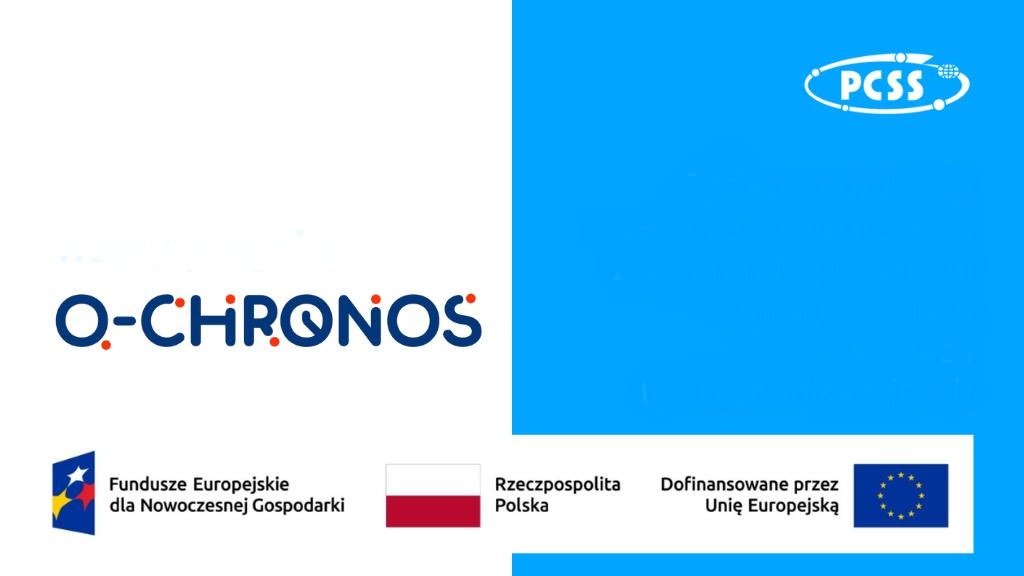
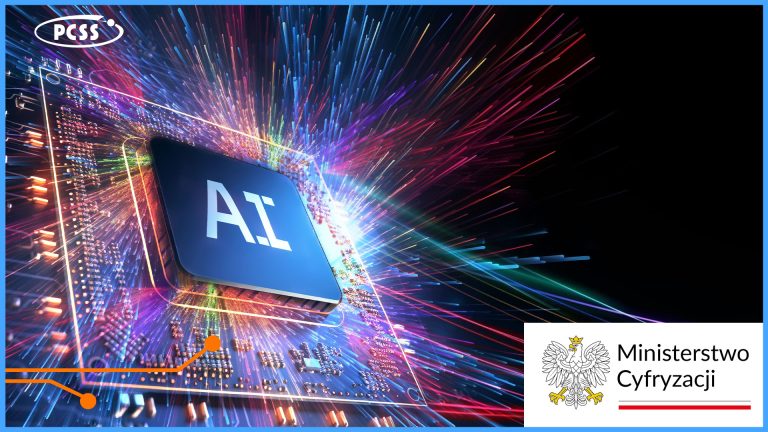
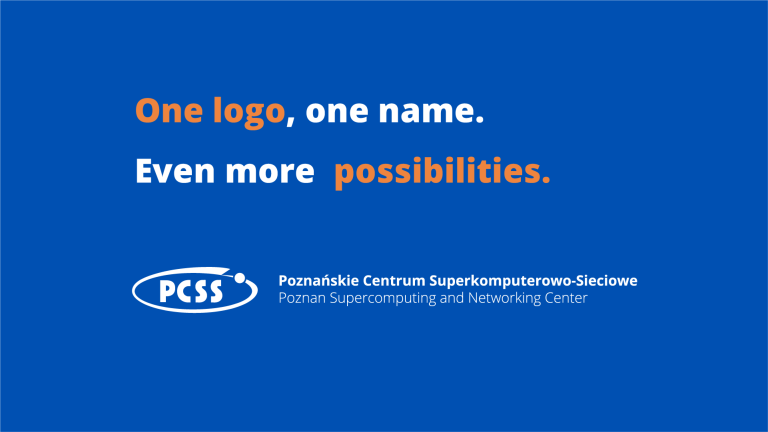
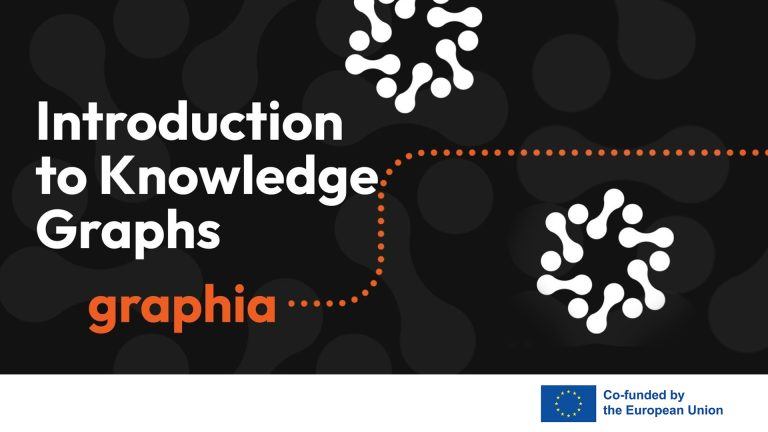
![The image displays the word "LUMEN" in a stylized, outlined font, with different letters connected by lines and arrows to various academic disciplines. The letters "L" and "U" on the left are linked to "Mathematics [Maths]" and "Social Sciences and Humanities [SSH]," while the letters "M," "E," and "N" on the right are associated with "Earth System Science [ESS]" and "Molecular Dynamics [MD]." The overall design suggests an interconnectedness of these fields, potentially illustrating the interdisciplinary nature of something represented by "LUMEN".](https://www.psnc.pl/files/2025/05/lumen2_EN-768x432.jpg)
